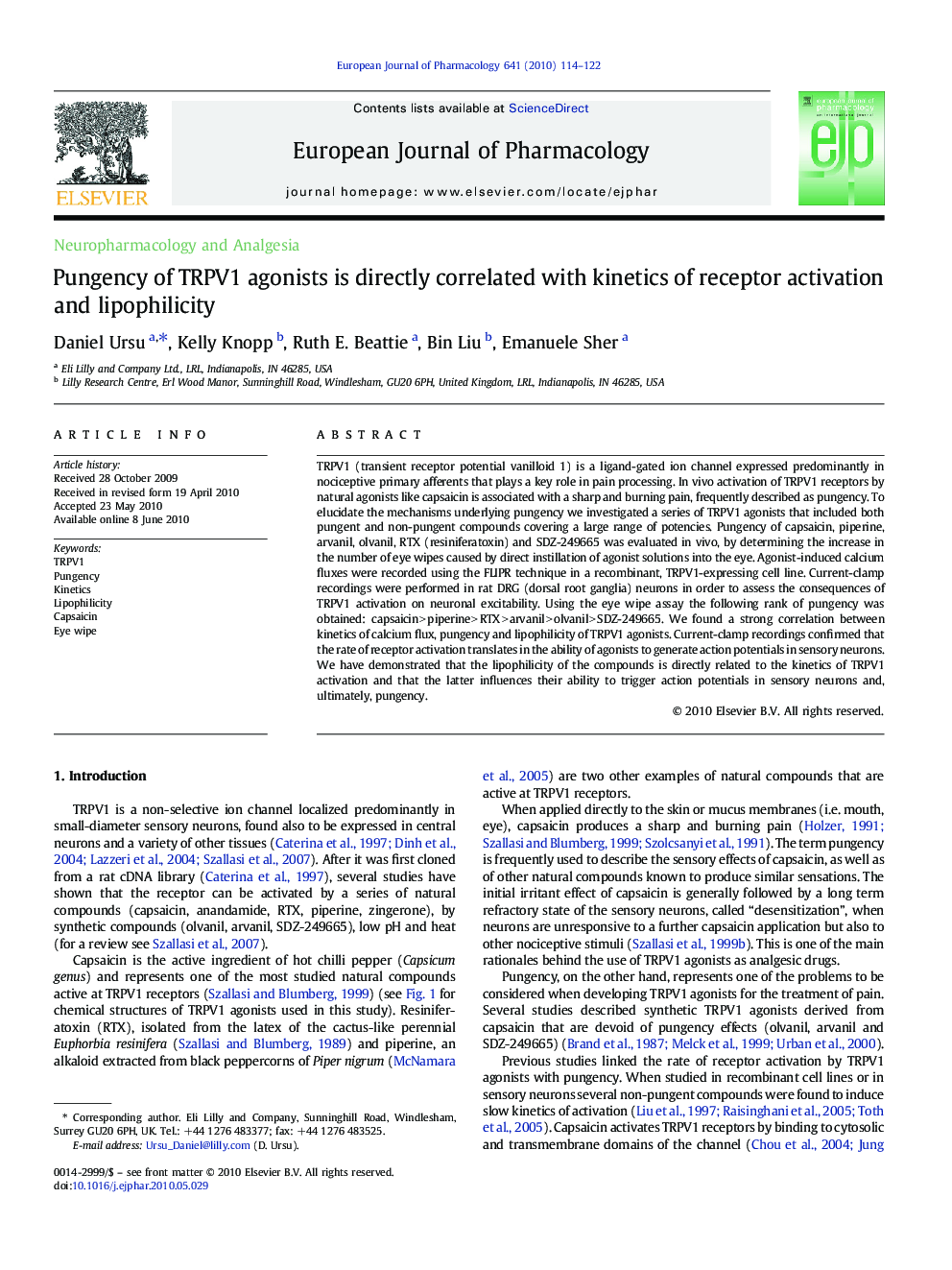| Article ID | Journal | Published Year | Pages | File Type |
|---|---|---|---|---|
| 2533427 | European Journal of Pharmacology | 2010 | 9 Pages |
TRPV1 (transient receptor potential vanilloid 1) is a ligand-gated ion channel expressed predominantly in nociceptive primary afferents that plays a key role in pain processing. In vivo activation of TRPV1 receptors by natural agonists like capsaicin is associated with a sharp and burning pain, frequently described as pungency. To elucidate the mechanisms underlying pungency we investigated a series of TRPV1 agonists that included both pungent and non-pungent compounds covering a large range of potencies. Pungency of capsaicin, piperine, arvanil, olvanil, RTX (resiniferatoxin) and SDZ-249665 was evaluated in vivo, by determining the increase in the number of eye wipes caused by direct instillation of agonist solutions into the eye. Agonist-induced calcium fluxes were recorded using the FLIPR technique in a recombinant, TRPV1-expressing cell line. Current-clamp recordings were performed in rat DRG (dorsal root ganglia) neurons in order to assess the consequences of TRPV1 activation on neuronal excitability. Using the eye wipe assay the following rank of pungency was obtained: capsaicin > piperine > RTX > arvanil > olvanil > SDZ-249665. We found a strong correlation between kinetics of calcium flux, pungency and lipophilicity of TRPV1 agonists. Current-clamp recordings confirmed that the rate of receptor activation translates in the ability of agonists to generate action potentials in sensory neurons. We have demonstrated that the lipophilicity of the compounds is directly related to the kinetics of TRPV1 activation and that the latter influences their ability to trigger action potentials in sensory neurons and, ultimately, pungency.
